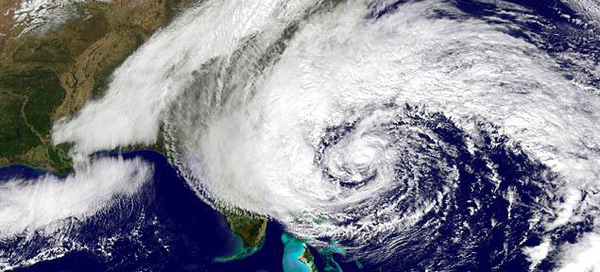It’s virtually certain that 2012 will be the warmest year on record for the continental United States. When scientists affirm these results, they’ll no doubt make headlines. But we should put that record in perspective. The continental U.S. covers just 2 percent of the Earth’s surface. Globally, we’re set to have another very hot year, likely in the top 10 according to the World Meteorological Organization.
Looking further back, the past 35 years have all exceeded the 20th century average global temperature. That’s a generational shift. Half the U.S. population is 35 or younger, so half of all Americans have never lived through an “average” year.
Some scientists call this a “new normal,” but there’s nothing “normal” about it compared to the climate many of us grew up with. As heat-trapping emissions from burning coal and gas and destroying tropical forests build up in the atmosphere, the climate is changing faster than anything nature would produce on its own. Given how quickly climate change is unfolding, today’s “new normal” will quickly become the “old normal” and old records will keep being broken.
Extreme weather and climate
One of the most immediate ways we experience a changing climate is through shifts in weather extremes. And the weather we experienced this year gives us a strong taste of what future climate change could deliver.

The 2012 Drought in America withered corn crops across the Midwest. Source: Shotaku; Flickr Commons
This year’s summer heat waves were some of the hottest in our history. Longer, more intense heat waves are one of the clearest links scientists see between global warming and changes in weather.
If there were no climate change, we’d be just as likely to break record low temperatures as we are to break record highs. But the United States broke about 300,000 record highs but less than 150,000 record lows over a recent ten year time period. Over time, new heat records are further outpacing new cold records.
We also saw drought cover more than half the country, withering crops and decimating cattle herds. Scientists also see a clear link between climate change and increased drought in some regions. Consequently, farmers, ranchers and water managers can no longer count on “normal” precipitation patterns.
Finally, we saw Sandy, a storm with a price tag in the tens of billions of dollars. As our planet warms, ice on glaciers melts and the ocean heats and expands, making sea levels rise. In New York City, water levels are 11 to 16 inches higher than they were a century ago, allowing Sandy to ride in on a super-high tide. Now every coastal storm has the potential to punch further inland and inundate more homes and businesses.

Hurricane Sandy hits the U.S. East Coast. In New York City, water levels are 11 to 16 inches higher than they were a century ago. Devastating flood damage extended farther inland as a result. Source: NOAA
Following the wrong path
Future climate change will depend on the energy choices we make today and how the climate system responds to our emissions. The United States and other countries have pledged to limit warming to no more than 3.6 degrees Fahrenheit above pre-industrial levels. But policies currently in place won’t meet that goal. Instead, we’re on track to experience more than 7 degrees of warming by the end of the century.
That wouldn’t be a “new normal.” That would be a different planet.
Our own National Academy of Sciences, founded by Abraham Lincoln to inform policymakers about science, concluded that climate change is occurring, is caused largely by human activities, and poses significant risks for human and natural systems. Nearly every national academy of science the world over and scores of scientific societies affirm these basic findings.
But misinformation from special interests has sown doubt and confusion about climate science among the public and policymakers.
That has to change. There’s nothing ideological or partisan about first responders planning for the toll increased summer heat can take on seniors. Or farmers taking a hard look at the future for their crops. Or coastal planners anticipating how fast sea levels are rising near valuable beaches.
Post-Sandy, conversations about climate change have a new urgency.
Using science to inform planning and find solutions
We can be more creative in planning and building resilient communities. There are win-win solutions to address the underlying causes of climate change. For instance, energy efficiency reduces heat-trapping emissions and also helps power companies manage demand during heat waves. Reducing emissions that cause climate change can also help improve air quality and health.
Policymakers shouldn’t put climate change — and the best available, most accurate science, that informs our responses to it — on the back burner.
As our climate changes, it will almost certainly keep delivering more wake up calls like this year’s extreme weather. It’s time for us to get to work finding solutions and making sure we’re prepared for the impacts that are still to come.
**This post originally appeared as an op-ed carried by the McClatchy-Tribune Information Services, which provides content to dozens of newspapers across the country.
